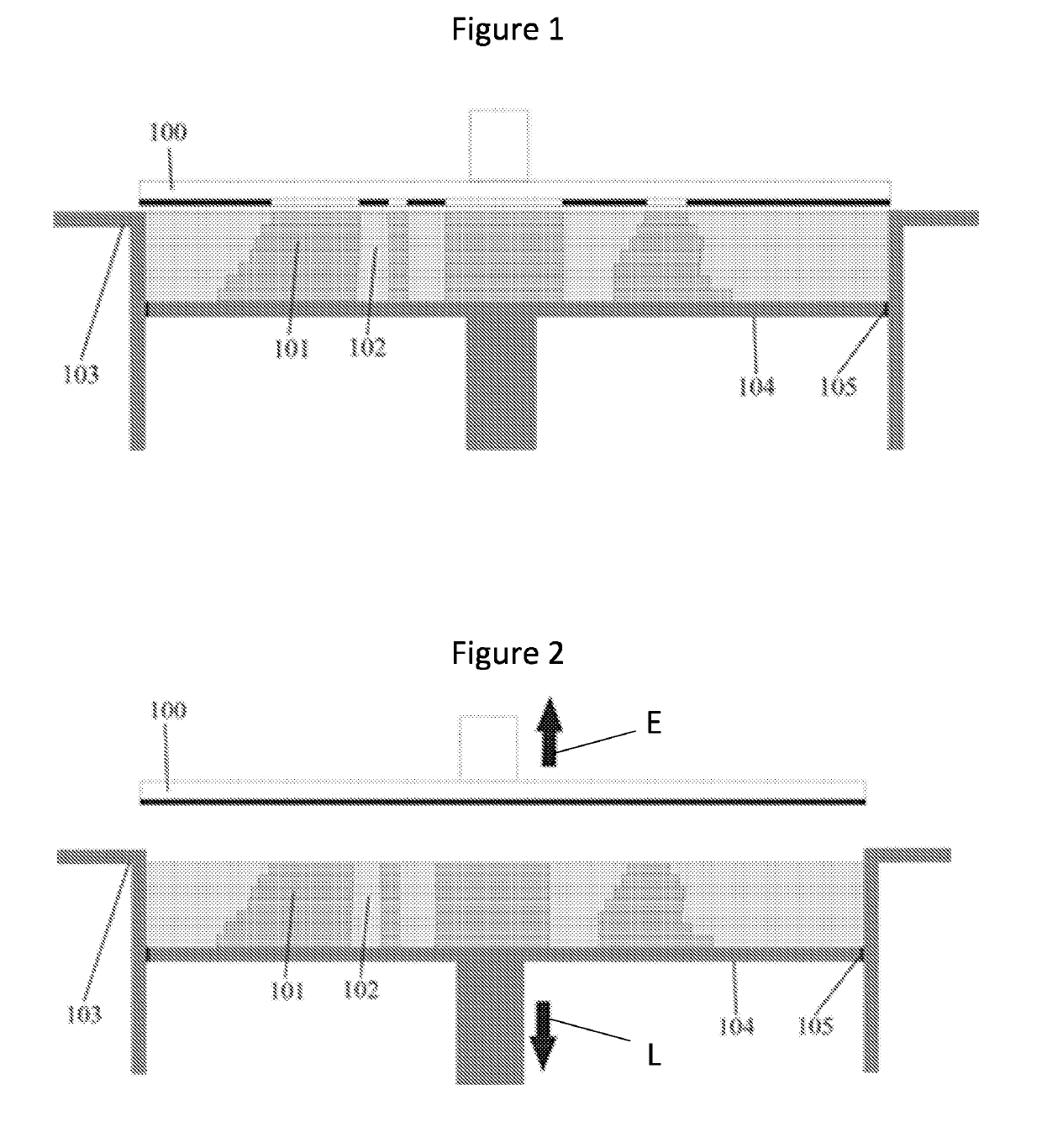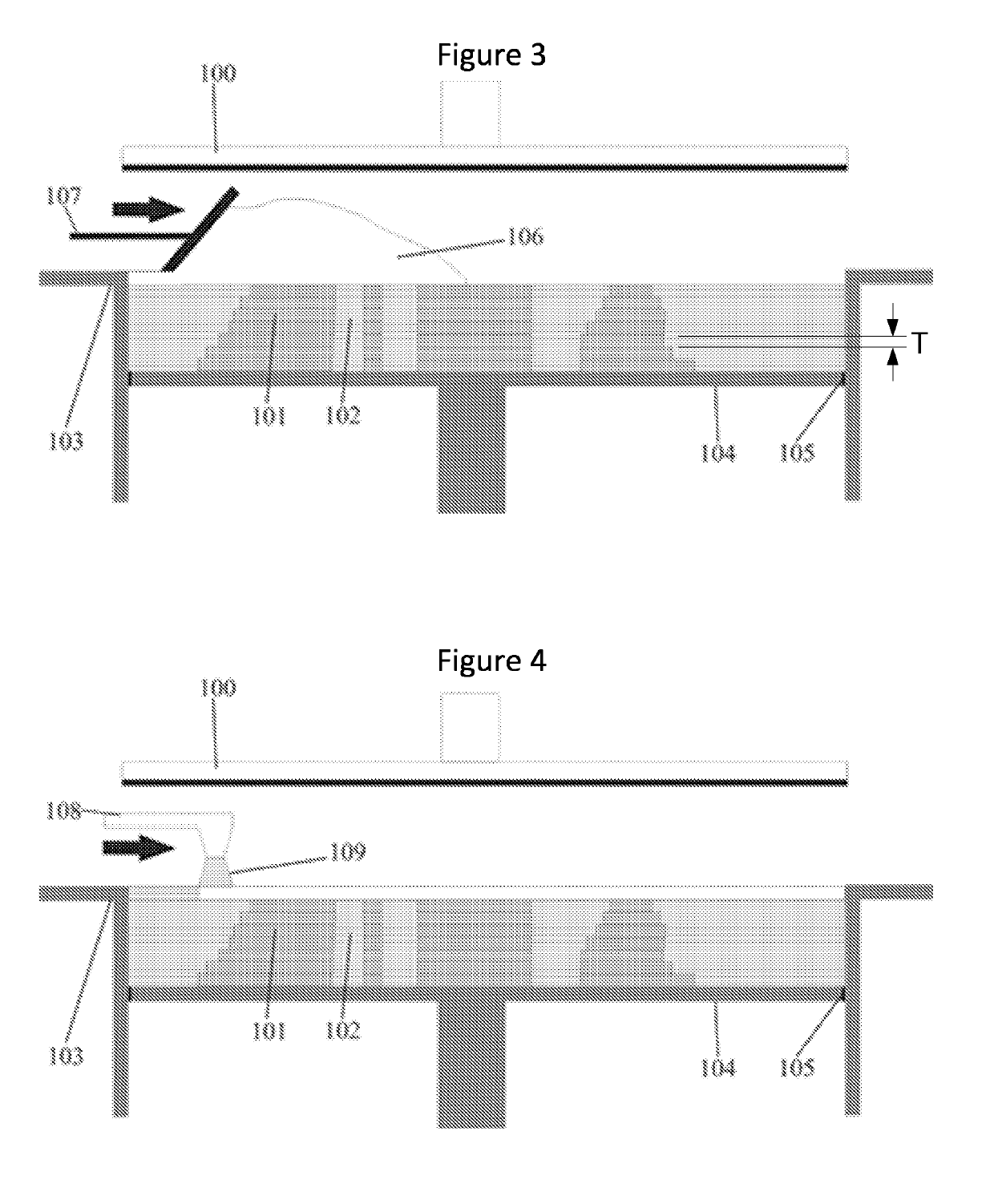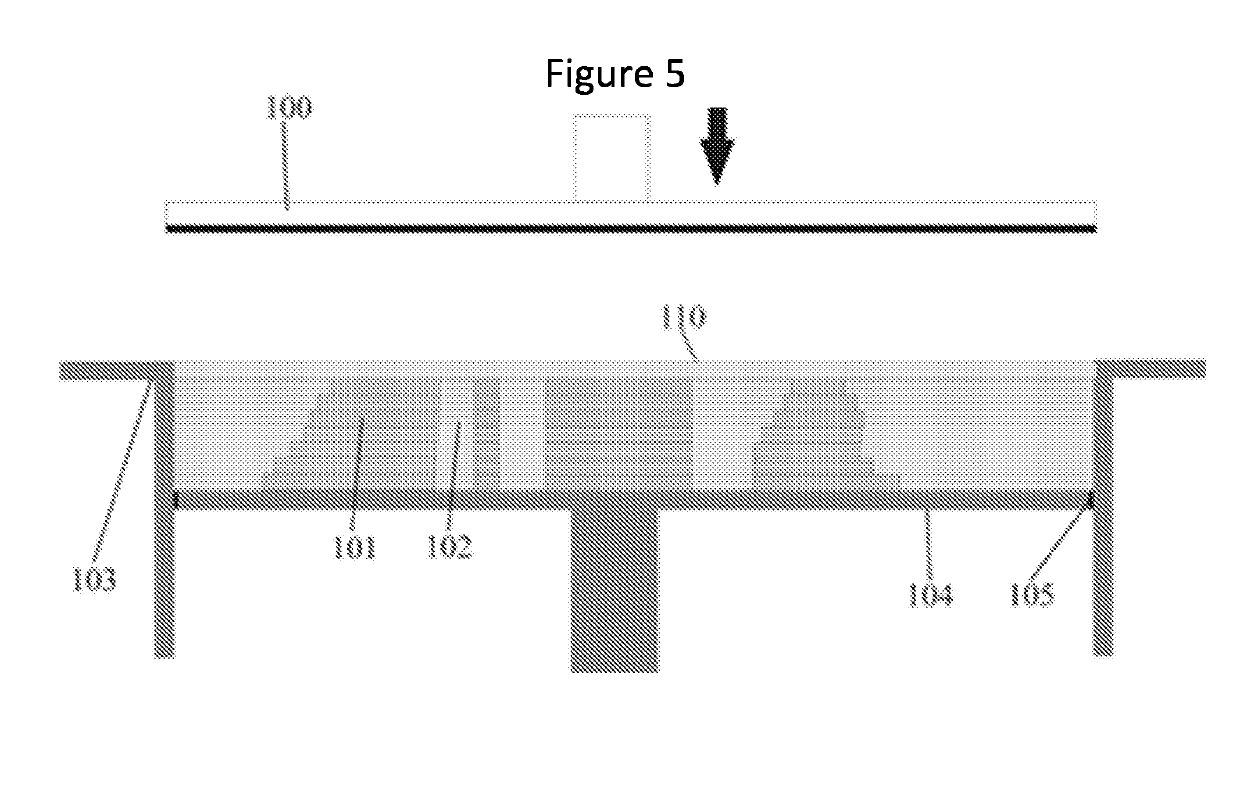Methods For Making A Metal, Sand or Ceramic Object By Additive Manufacture and Formulations For Use In Said Methods
a technology of additive manufacturing and 3d printing, which is applied in the direction of additive manufacturing processes, instruments, photomechanical equipment, etc., can solve the problems of compromising the accuracy difficult for the light to penetrate, etc., and achieves accurate representations of digital designs, more energy, and compromise the effect of the object's eventual resolution
- Summary
- Abstract
- Description
- Claims
- Application Information
AI Technical Summary
Benefits of technology
Problems solved by technology
Method used
Image
Examples
example 1
Sand and Photopolymer 3D Printer
[0122]In this experiment 100 g of photopolymer was constructed in the following manner; 95 g of Ebecryl 639 from Allnex of Belgium, which is a high functionality acrylated epoxy novolac resin diluted with 30% of trimethylolpropane triacrylate (TMPTA) and with 10% of hydroxy ethyl methacrylate (HEMA), was added to 2 g of bis(eta5-2,4-cylcopentadien-1-yl)-bis(2,6-difluoro-3-(1H-pyrrol-1-yl)-phenyl) titanium under the brand name Irgacure 784 from BASF and 3 g of Pentaerythritol Tetra(3-mercaptopropionate) under the brand name Thiocure PETMP from Bruno Bock. The solution was added to a glass vessel and mixed for 6 hours until the initiators were fully dissolved.
[0123]1 kg of Congleton HST 50 sand was obtained from Sibelco Minerals and Chemicals and was loaded into a mixing container. 50 g of the photopolymer was sprayed over the top of the sand so that it was completely covered. The contents of the container were given slow agitation for 10 minutes until ...
example 2
Photopolymer Separately Delivered in a 3D Printer
[0127]In this experiment 100 g of photopolymer was constructed in the following manner; 75 g of Ebecryl 639 from Allnex, 20 g of Hexanediol diacrylate from Allnex, 2 g of Irgacure 784 and 3 g of Thiocure PETMP were mixed in a glass vessel for 6 hours until the initiators were fully dissolved.
[0128]1 kg of Nugent 480 sand was obtained from the Nugent Sand Co Inc. and was loaded into a mixing container. A Xaar 1003 GS6 inkjet head with 360 nozzles per inch delivering greater than 1000 dpi, was loaded with the photopolymer. The photopolymer was heated to make the viscosity compatible with the Xaar1003 GS6 printhead.
[0129]The screen was elevated to the top of the liner drive. The print platform was lowered to be recessed by 0.1 mm from the top of the printer. The sand was evenly delivered into the recess by the doctor blade. The inkjet head was then primed and set to deliver the minimum amount to just coat the sand, without flooding it, b...
example 3
f Sand, Borosilicate Glass Particles and Photopolymer Dispensed in a 3D Printer
[0131]In this experiment 1 kg of photocurable slurry was manufactured. 500 g of Cerabeads 1450, with 300 g of Potters beads (Spheriglass® 5000 Solid Glass Spheres), 200 g of photosensitive resin with some low melting points additives (around 3% wt), and 3% of flow agents. After mixing the components with a high shear mixer rotating at 12,000 rpm for 30 minutes the sand mixture was dispensed at 150 micron layer thickness and hardened by a LCD screen emitting visible light. After the 3D object was made it was post cured under visible light for 2 hours. The object was placed in the oven and slowly increased by 1° C. / min from 200° C. to 450° C. It has held at 450° C. for 2 hours and then slowly increased by 2° C. / min up to 750° C., where the glass particles started softening and passing their glass transition point. The object was hold for 30 mins at the highest temperature and the gradually cooled (with the ...
PUM
| Property | Measurement | Unit |
|---|---|---|
| Luminous intensity | aaaaa | aaaaa |
| Luminous intensity | aaaaa | aaaaa |
| Thickness | aaaaa | aaaaa |
Abstract
Description
Claims
Application Information
 Login to View More
Login to View More - R&D
- Intellectual Property
- Life Sciences
- Materials
- Tech Scout
- Unparalleled Data Quality
- Higher Quality Content
- 60% Fewer Hallucinations
Browse by: Latest US Patents, China's latest patents, Technical Efficacy Thesaurus, Application Domain, Technology Topic, Popular Technical Reports.
© 2025 PatSnap. All rights reserved.Legal|Privacy policy|Modern Slavery Act Transparency Statement|Sitemap|About US| Contact US: help@patsnap.com



